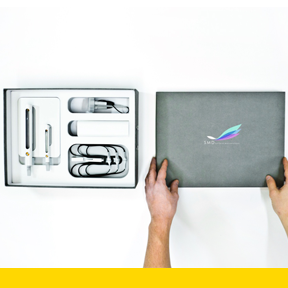1/1
Medical Toolkit for Surface-Mount Microdialysis (SMD)
The Surface-Mount Microdialysis (SMD) Medical Toolkit was designed around the SMD invention. The designer worked in close collaboration with Pernilla Abrahamsson, the inventor of SMD, and surgeons and nurses at Umea Hospital in Sweden. SMD is a patented invention that is used to measure local metabolic changes in special tissues by adhering a catheter onto a specific organ during open surgery that needs to be closely monitored by medical personnel.
The Medical Toolkit consists of a package design, tubes, connectors, introducers and a pump. Key users include surgeons, operation-room and intensive-care nurses, and, most importantly, patients. The Medical Toolkit streamlines the number of procedures that need to be carried out during the surgery and monitoring phases. By doing so, the design reduces the risk of contamination, medical error and workload while increasing monitoring time.
Microdialysis is a new procedure; only a handful of equipment exists. These products, however, do not consider all users involved in the procedure, including patients. When introducing the catheter into the body during open surgery many unnecessary steps and equipment is used; besides the added workload, tools such as forceps can accidentally damage an organ or the membrane of the catheter. The current packaging of these products doesn’t optimally protect the catheter during shipping and lacks label visibility when stored on a shelf.
The package design of the Medical Toolkit protects the SMD catheter, which is the most critical and valuable element, from damage during shipping. The layering of the package also works with industry standards for the inside sterile zone and the outside non-sterile zone. During surgery, the non-sterile-nurse peels the cap and presents the inside-sterile-zone to the sterile nurse. The sterile nurse takes out the inside sterile zone and presents it to the surgeon. The orientation of the catheter helps the surgeon pick the end tip of the catheter.
Patients typically can’t go into MRI or CT machines with a pump because of the pump’s electrical components. The pump in the Medical Toolkit has no electrical components, so it can be safely used during MRI and CT scans. There are two pumps in the kit: big and small. The big pump is for stationary use, whereas the small pump makes the mobilization of the patient easier. The container of the pumps is elastomeric, which means that the perfusion fluid comes prefilled in a balloon tube that is put inside the pump. This way the syringe refill, which involves multiple steps, is avoided. This reduction in the number of steps not only saves time but also prevents potential medical errors.
While patients are mobile, tubes clog from folds and tangles or catheters can pull out of the organs loosing critical continuous patient monitoring. In the Medical Toolkit two safety clip connectors were designed for each cable to ensure that the catheter stays inside the body even if it is accidentally pulled.
发布于2019-11-29
设计奖项
美国IDEA工业设计奖
Gold/金奖
2012 年
颜色

